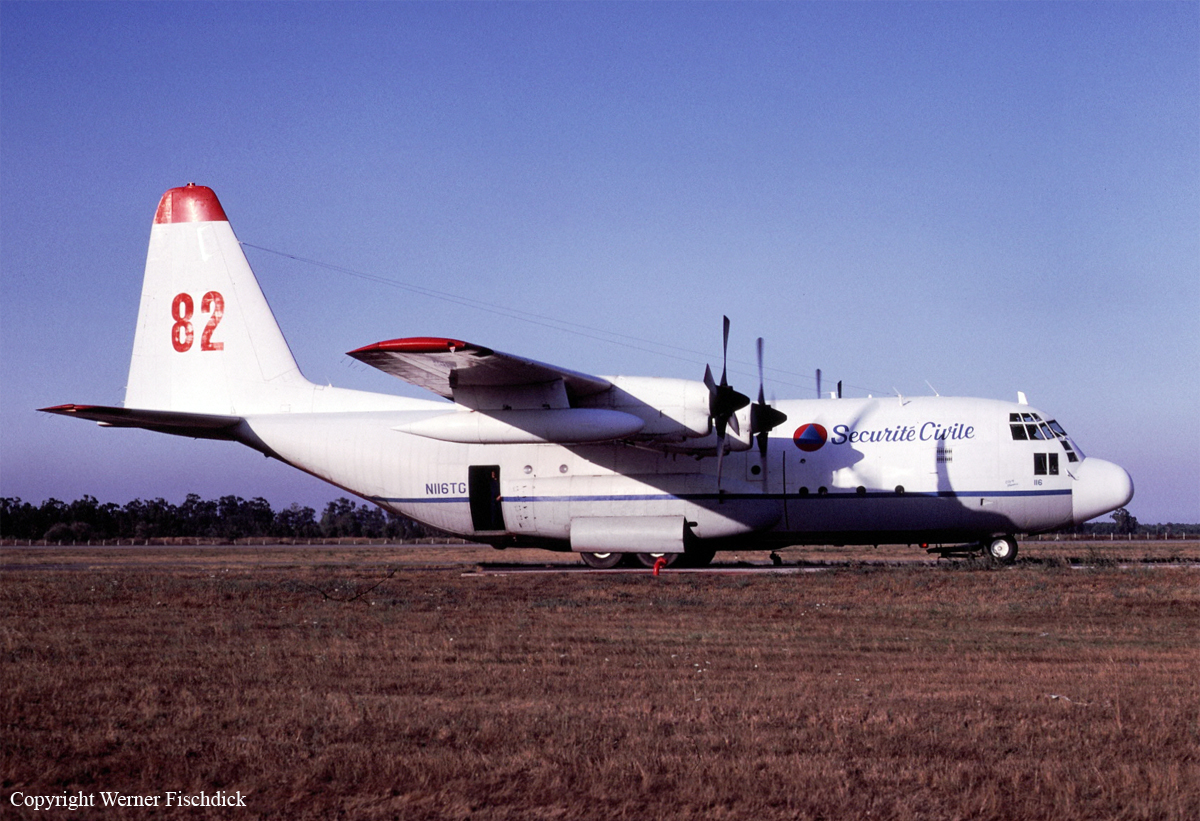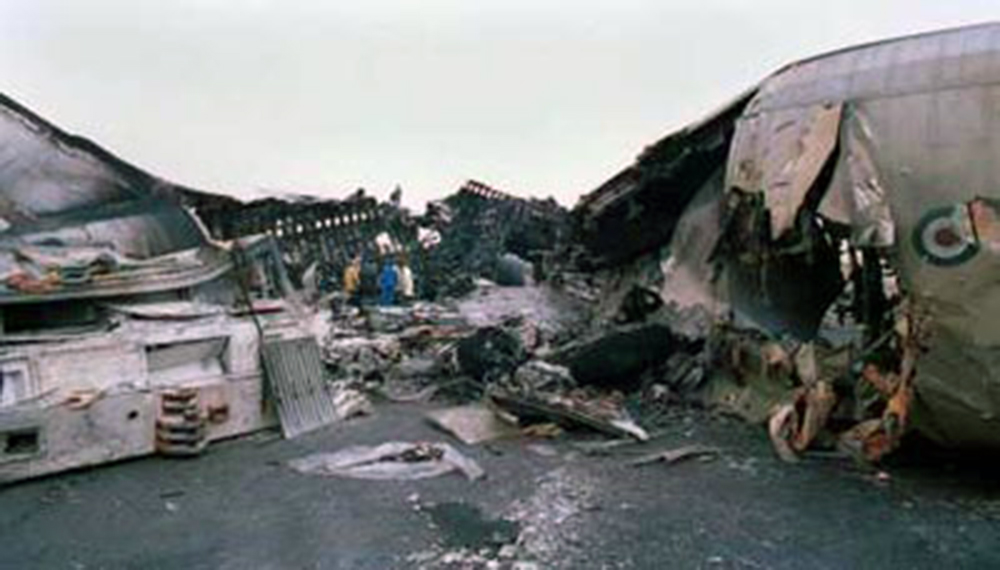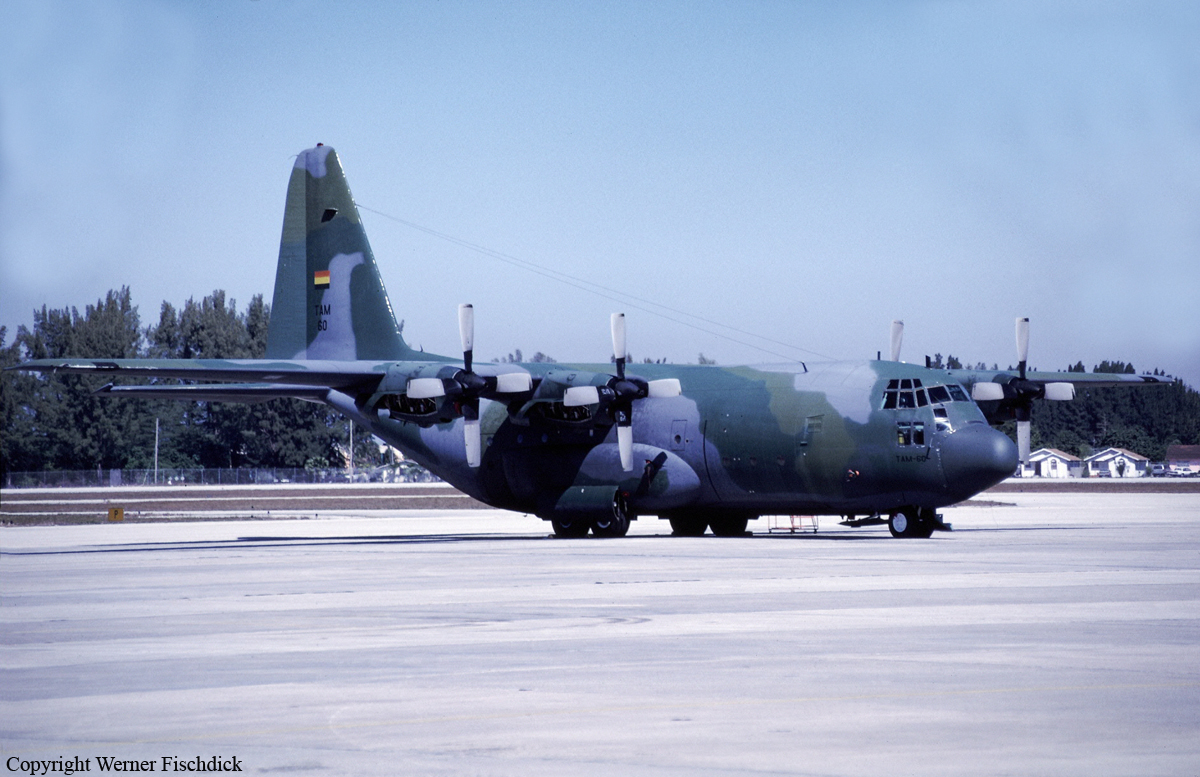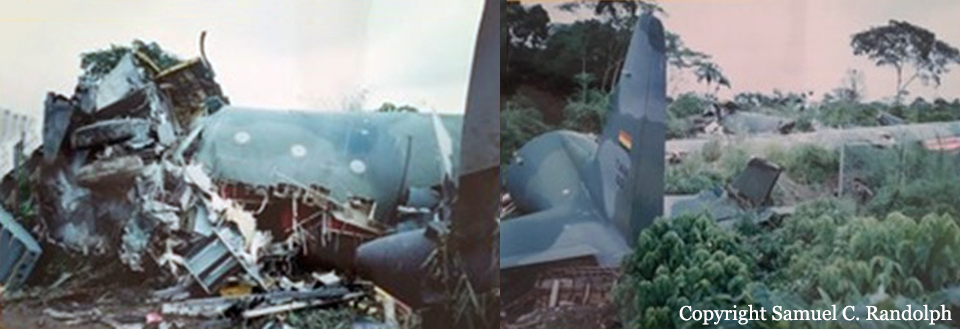Country
Crash of a Lockheed C-130A-6-LM Hercules in Burzet: 2 killed
Date & Time:
Sep 6, 2000 at 0903 LT
Registration:
N116TG
Survivors:
Yes
Schedule:
Marseille - Aubenas - Marseille
MSN:
3086
YOM:
1957
Flight number:
Tanker 82
Crew on board:
4
Crew fatalities:
Pax on board:
0
Pax fatalities:
Other fatalities:
Total fatalities:
2
Circumstances:
In the early morning, the four engine aircraft departed Marseille-Marignane on a positioning flight to Aubenas-Vals-Lanas Airport, Ardeche, where the crew was briefed about a forest fire in the region of Burzet, some 15 km northwest of Aubenas. The aircraft departed Aubenas with two Canadair CL-415 and was dispatched to the area on fire under callsign 'Tanker 82'. A first drop was completed successfully and while completing a second low pass, the aircraft struck trees and crashed on hilly terrain. Two crew members were seriously injured while two others were killed.
Crew:
Ted Hobard, pilot,
Paul Trinque, copilot, †
Jo WILLIAMS, navigator, †
Ted MEYER, mechanic.
Crew:
Ted Hobard, pilot,
Paul Trinque, copilot, †
Jo WILLIAMS, navigator, †
Ted MEYER, mechanic.

Crash of a Lockheed C-130H Hercules at King Hussein AFB: 13 killed
Date & Time:
Jul 25, 2000 at 0600 LT
Registration:
348
Survivors:
No
Schedule:
King Hussein AFB - King Hussein AFB
MSN:
4073
YOM:
1965
Crew on board:
7
Crew fatalities:
Pax on board:
6
Pax fatalities:
Other fatalities:
Total fatalities:
13
Circumstances:
The four engine aircraft was dispatched at King Hussein AFB for a local training mission on behalf of the Jordan Special Forces. While flying at an altitude of 1,000 feet in the vicinity of the airbase, the crew encountered an unexpected situation when the aircraft that entered an uncontrolled descent. At low height, the crew attempted a last correction manoeuvre to avoid power cables when the aircraft crashed in a huge explosion. All 13 occupants were killed. It was reported that the crew encountered unknown technical problems.
Crash of a Lockheed C-130 Hercules in Tehran: 6 killed
Date & Time:
Feb 1, 2000 at 1030 LT
Survivors:
No
Schedule:
Tehran - Hamadan
Crew on board:
6
Crew fatalities:
Pax on board:
0
Pax fatalities:
Other fatalities:
Total fatalities:
6
Circumstances:
The four engine aircraft departed Tehran-Mehrabad Airport on a training flight to Hamadan, carrying six crew members. At liftoff from runway 29R, the aircraft deviated to the right and crashed on an Iran Air Airbus A300B2-203 that was towed. Both aircraft exploded instantly and were totally destroyed by a post crash fire. All six crew members on board the Hercules were killed as well as three people who were on board the Airbus.
Probable cause:
It is believed that the Hercules went out of control upon takeoff following an engine failure.

Crash of a Lockheed C-130B Hercules in Chimore: 5 killed
Date & Time:
Jan 14, 2000 at 1216 LT
Registration:
TAM-60
Survivors:
Yes
Schedule:
Chimore - Trinidad
MSN:
3559
YOM:
1960
Crew on board:
7
Crew fatalities:
Pax on board:
24
Pax fatalities:
Other fatalities:
Total fatalities:
5
Circumstances:
During the takeoff roll on runway 35 at Chimore Airport, about 600 meters from the end, the airplane went out of control, veered off runway to the left, impacted a drainage ditch (3 metres deep) and crashed in a wooded area. Five occupants were killed while 26 other occupants were injured. The aircraft was destroyed.


Crash of a Lockheed L-382G Hercules in Luzamba
Date & Time:
Dec 28, 1999 at 0545 LT
Registration:
S9-BOP
Survivors:
Yes
MSN:
4477
YOM:
1972
Crew on board:
4
Crew fatalities:
Pax on board:
0
Pax fatalities:
Other fatalities:
Total fatalities:
0
Circumstances:
Following a night visual approach to Luzamba Airport, the crew landed the aircraft in the first metres of the runway. For unknown reasons, the aircraft lifted off and floated few cm above the runway surface for few seconds before landing a second time. Unable to stop within the remaining distance (the gravel runway is 1,500 metres long), the aircraft overran, went down an embankment and came to rest 16 metres further. All four crew members escaped uninjured while the aircraft was damaged beyond repair.
Crash of a Lockheed C-130E Hercules in Kuwait City: 3 killed
Date & Time:
Dec 9, 1999 at 0250 LT
Registration:
63-7854
Survivors:
Yes
Schedule:
Kuwait - Kuwait
MSN:
3924
YOM:
1964
Crew on board:
8
Crew fatalities:
Pax on board:
86
Pax fatalities:
Other fatalities:
Total fatalities:
3
Circumstances:
On a night approach to Kuwait-Ahmed Al-Jaber AFB, the aircraft impacted the ground approximately 2,895 feet short and about 40 feet to the left of the runway centerline. On impact, the undercarriage were torn off and some penetrated the cabin floor. The crew initiated a go-around procedure and diverted to the Kuwait International Airport where he completed an emergency belly landing. Three passengers were killed while all other occupants were rescued. The aircraft was damaged beyond repair.
Probable cause:
Failure of the crew to follow the published procedures. The following contributing factors were identified:
- Crew complacency,
- The pilot-in-command suffered a spatial disorientation at a critical phase of the flight, resulting in the crew's loss of situational awareness and failing to recognize an unsafe descent,
- Lack of pilot leadership and discipline,
- Lack of support from the copilot, navigator, and flight engineer,
- Overall lack of sound judgment by the flight deck crew.
- Crew complacency,
- The pilot-in-command suffered a spatial disorientation at a critical phase of the flight, resulting in the crew's loss of situational awareness and failing to recognize an unsafe descent,
- Lack of pilot leadership and discipline,
- Lack of support from the copilot, navigator, and flight engineer,
- Overall lack of sound judgment by the flight deck crew.

Crash of a Lockheed C-130A Hercules on Mt La Paila: 5 killed
Date & Time:
Sep 17, 1999
Registration:
3610
Survivors:
No
Schedule:
Santa Lucía AFB - Santa Lucía AFB
MSN:
3217
YOM:
1959
Crew on board:
5
Crew fatalities:
Pax on board:
0
Pax fatalities:
Other fatalities:
Total fatalities:
5
Circumstances:
The four engine aircraft departed Santa Lucía AFB on a local training flight. While flying in clouds, the aircraft struck the slope of Mt La Paila (2,865 metres high) located about 57 km northeast of the airbase. All five crew members were killed.
Probable cause:
Controlled flight into terrain.







